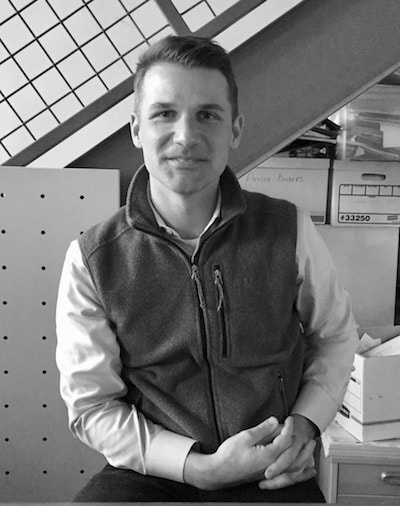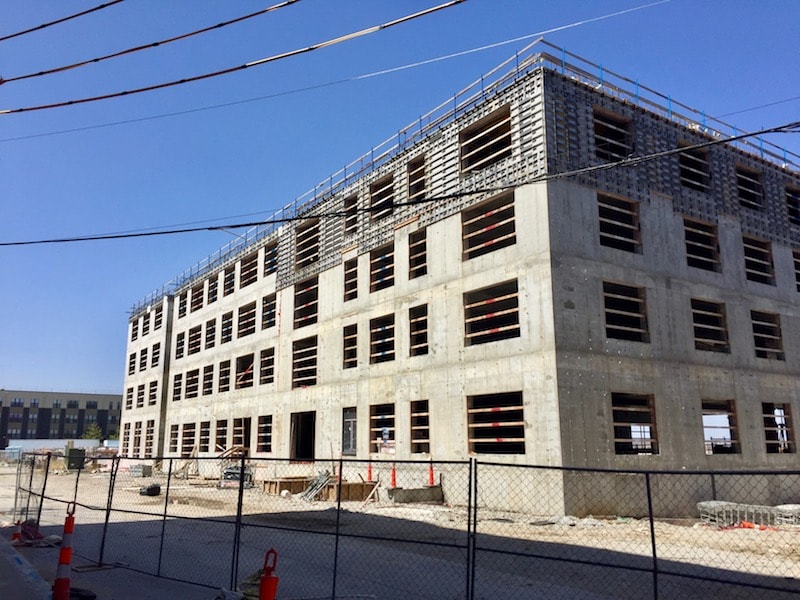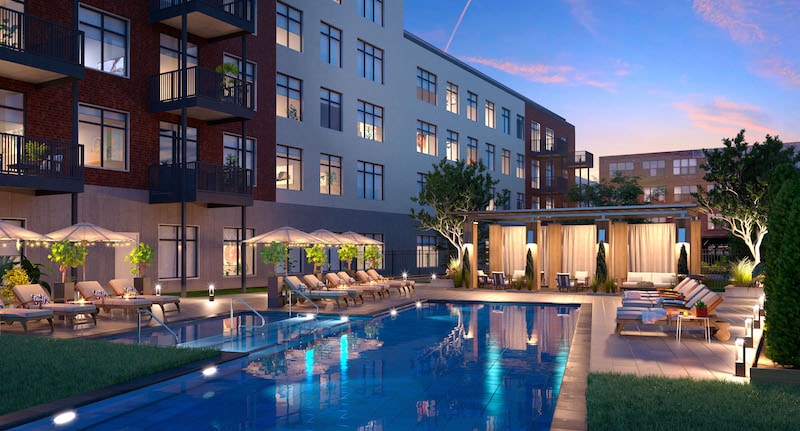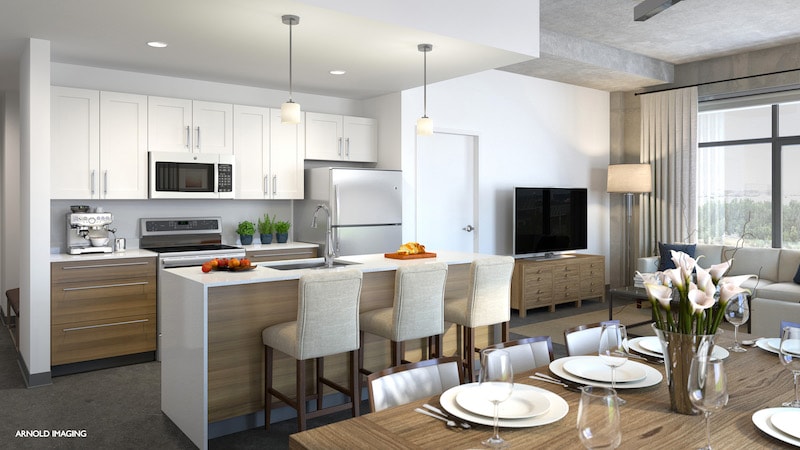Innovative Second and Delaware Apartment Project Expects to Resume Work this Summer

Published April 19th, 2018 at 12:15 PM
(Updated Aug. 16) Jonathan Arnold, the developer of Second and Delaware, told the PIEA board construction is expected to resume in September with completion expected in mid-2020. Rising labor and material costs have pumped up the overall project cost to $71 million.
Arnold said the development still is expected to be the world’s largest “passive house building” and use 80 percent less energy than conventional projects. The PIEA board approved $35 million in industrial revenues bonds for the development.
(Updated June 25) The developer of the stalled Second and Delaware project remains on course for resuming work in August, and plans to seek approval next month from the Planned Industrial Expansion Authority on a restructured loan agreement and continuation of sales tax breaks on construction materials.
In a briefing to the PIEA board last week, attorney Charles Renner said about $54 million in work remains on the project and Crossland Construction Co. has replaced HarenLaughlin as the contractor. Berkshire Hathaway, a firm controlled by billionaire Warren Buffett, also has increased its investment in the project.
By Kevin Collison
The stalled Second and Delaware apartment project in the River Market, designed to be one of the most energy-efficient in the world, is expected to resume construction this August, its developer said.
Construction on the 276-unit development overlooking the Missouri River along Second Street halted last June following a contractor dispute. The tower construction crane was removed and the partly-built concrete shell has set dormant since.
“Our previous contractor had issues with a subcontractor that were out of our control,” said developer Jonathan Arnold. “Over the past eight months, a new contractor has been lined up.

Jonathan Arnold
“We still have the full support of the city, our lenders and our partners, and we’re scheduled to start construction again in August.”
Arnold estimated it will take about 20 months to complete the six-story project after construction resumes, sometime in spring 2020.
That will be six years after he first proposed building an ambitious development that would incorporate advanced insulating techniques to make it 90 percent more energy efficient than typical apartment construction.
The Second and Delaware project, which Arnold hopes to replicate in other locations locally and beyond, is the result of a lifetime observing the built environment and how people live.
Arnold, a New York City native, said his first lessons occurred while he was a student at Cornell University studying abroad. While in Rome, he observed how well-constructed density could create a lasting, urbane environment.
“Density done right sets up a richer quality of life that’s highly desirable,” he said.
Later, while in South Africa, he observed how the sprawling shanty-towns outside its major cities were being built in an unsustainable fashion similar to suburban development in the U.S.
“I knew I wanted to build neighborhoods, so I set out with a plan build progressively larger projects,” he said.

Work stopped last June at the Second and Delaware project.
After receiving an MBA in real estate from Columbia University, he moved to Kansas City in 2002.
His first project was the redevelopment of historic building at 136 Main into the First and Main Lofts. It was followed by the redevelopment of another historic property at 140 Walnut St. into the Gallo office building.
He completed a much larger historic redevelopment project in Maine in 2015. The Mill at Dover-Foxcroft project renovated a former 60,000 square-foot furniture factory into apartments, an inn and restaurant.
The Second and Delaware project incorporates many of the energy-efficient and green-design features Arnold learned while working for the United Nations during its “Rio+20: The Future We Want” environmental conference in 2011.
The key design component to making the Second and Delaware project super energy-efficient is the use of passive building standards. Its walls are built with two layers of concrete with a layer of insulation between them.
“Essentially, it’s like putting a sweater around the building and reducing the energy you need,” Arnold said. “You see a 70- to 90 percent drop in energy bills.”
The Second and Delaware development will have 56 studios; 120, one-bedroom units, and 100 two-bedroom units. The final rent rates have not been determined.
The project, which was designed by Jeffrey White of New York, also will feature 10 1/2 foot ceilings on the upper floors and 12 1/2 foot ceilings on the first floor.
“We’ll cater to the needs of empty-nesters who don’t want to step back to a shoebox, dorm-like environment,” Arnold said.

The Second and Delaware development will feature a soccer field-size courtyard with a pool. (Arnold Imaging)
Amenities include a pool overlooking the river, a large courtyard with fire pits and shade stations, a club room with a teaching kitchen and 30,000 square feet available for rooftop gardening. A 500-space garage is locating beneath the development.
The project also is located close to the streetcar line.
Arnold’s financial backers include Affordable Housing Partners, a company that’s part of the Berkshire Hathaway portfolio controlled by Warren Buffett.
The plan is to use Second and Delaware project as a prototype for similar energy-efficient developments elsewhere. Other sites in Kansas City, and in Denver and Omaha, are being considered.
“We’re looking forward to scale it up and roll the buildings into a real estate investment trust that people can own stock in,” Arnold said.

Rendering of kitchen and dining area in a two-bedroom apartment. (Image from Arnold Imaging.)


